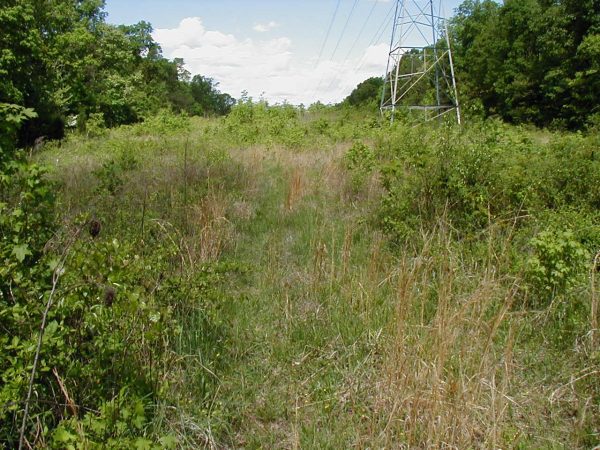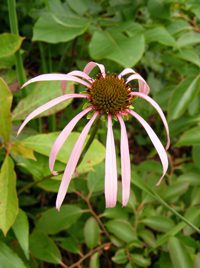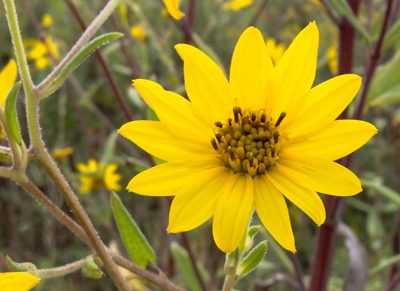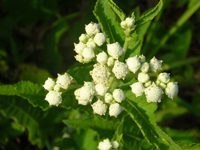Piedmont prairies offer glimpses of region’s distant past

If you could travel back in time to the Carolinas Piedmont before European settlement, some of the landscape might look a bit like this clearing in northwestern Mecklenburg County, tucked under swooping Duke Energy power lines.
Here, a spring breeze whispers through slim brown stalks of last season’s little bluestem and Indian grass. Wild quinine and Schweinitz’s sunflower await the summer sun. All that’s missing are grazing herds of elk and bison.
This skinny stretch of ground on the doorstep of a manicured subdivision is Shuffletown prairie. Like a dozen or so other remnant prairies in the region, Shuffletown is a survivor from North Carolina’s distant past.
And although these landscapes are rare, those that have been protected are doing well, local experts say. In a time when so many of the region’s natural resources seem strained by surrounding development, the health of the remaining Piedmont prairies provides a welcome bit of good news.
 Catherine Luckenbaugh is the curator for the James F. Matthews Center for Biodiversity Studies at Reedy Creek Nature Preserve, but she’s also an expert on Piedmont prairies. As part of Mecklenburg’s park and recreation staff, she helps manage the properties and she knows them intimately – down to the individual stems of a rare flower she searched for on a recent morning.
Catherine Luckenbaugh is the curator for the James F. Matthews Center for Biodiversity Studies at Reedy Creek Nature Preserve, but she’s also an expert on Piedmont prairies. As part of Mecklenburg’s park and recreation staff, she helps manage the properties and she knows them intimately – down to the individual stems of a rare flower she searched for on a recent morning.
“It’s just hanging on here,” Luckenbaugh said as she stooped to examine leaves in the Shuffletown stubble, looking for the federally endangered smooth coneflower. “There’s maybe 10 flowering stems.”
The coneflower is one of the reasons Shuffletown was preserved. It’s one of a rare trio of plants at the site; the others are Georgia aster and Schweinitz’s sunflower.
The existence of those and other prairie-only plants, along with the unusual hardpan clay layer just below the surface, is what tells scientists that a spot is a historical prairie – not just a woods that’s been cut and kept open. Prairie fragments survive along roadsides, under power lines and on private property, while recreated prairies flourish at several Mecklenburg nature preserves.
They range from large swaths, such as the 60-acre remnant prairie at Mineral Springs Barrens in Union County, to tiny Shuffletown, which, though just a little more than 18 acres, is considered one of Mecklenburg County’s most pristine remnant prairies. Shuffletown is among those not open to the public due to its endangered species, but visitors can drive past a roadside remnant prairie along McCoy Road in north Mecklenburg or trek through recreated prairies at McDowell or Latta nature preserves or visit remnants farther afield, such as Blackjacks Heritage Preserve in York County.
Say “prairie” and the pictures that most often come to mind are the boundless grasslands of the Great Plains. But Piedmont prairies were more often glades within a forest or savannahs – open areas freckled with a few post oaks or other trees.
The spaces stayed open through grazing and fire – fire caused by lightning or intentionally set by the native Americans who lived in the region, who then hunted the game drawn to the open spaces. The English explorer John Lawson, during his early 1700s journey through the Carolinas, described passing prairies with “the woods being newly burnt and on fire in many places.”
Today, some of the Piedmont prairies still are managed through prescribed burns. The fire kills invading species, stimulates growth for prairie-loving plants and opens habitat for grassland wildlife.
 Seeds sleep. Then sometimes, when wind or flames fell trees, a prairie returns, a ghost from the past. “When Mineral Springs was first burned in the late 1990s, big bluestem grass (which is native to Piedmont prairies) came up – and it hadn’t been there before,” Luckenbaugh said.
Seeds sleep. Then sometimes, when wind or flames fell trees, a prairie returns, a ghost from the past. “When Mineral Springs was first burned in the late 1990s, big bluestem grass (which is native to Piedmont prairies) came up – and it hadn’t been there before,” Luckenbaugh said.
It’s happened even in the middle of the Uwharrie National Forest, said Chris Matthews, natural resources manager for Mecklenburg Park and Recreation. “We get a blow down and all of a sudden, we’ll get a population of Schweinitz’s sunflower. Places pop up from time to time.”
At Shuffletown, burning is out because homes in the nearby Riverbend neighborhood are so close. That is why Luckenbaugh and four other park and recreation staffers slogged through the brush earlier this year, clearing honeysuckle, blackberry brambles and other sun-greedy invaders by hand.
The weeding protects the redoubt of prairie plants – allowing wild quinine to spread, rattlesnake master to send out white flowers, blazing star liatris to bloom purple in the autumn.
 “Intensive and tedious,” is how Luckenbaugh describes Shuffletown’s management. And caring for the region’s prairie fragments takes a lot of coordination.
“Intensive and tedious,” is how Luckenbaugh describes Shuffletown’s management. And caring for the region’s prairie fragments takes a lot of coordination.
“We work closely with Duke [Energy] because a lot of prairieland resides on land they manage. They’ve been very helpful,” Matthews said. “It takes not just us, but working with other people – the Catawba Lands Conservancy, the Department of Transportation, the U.S. Fish and Wildlife Service – to keep these things going.”
The effort is worth it, Luckenbaugh says, because the prairies, though they were rare even when they were more widespread, are a continuing home to uncommon species.
As entire habitats are erased, as the plants and animals that clung to them disappear, it’s impossible to predict the effect on human beings. And, she said, “you’ll never know what you’ve lost if you don’t preserve the parts you have.”